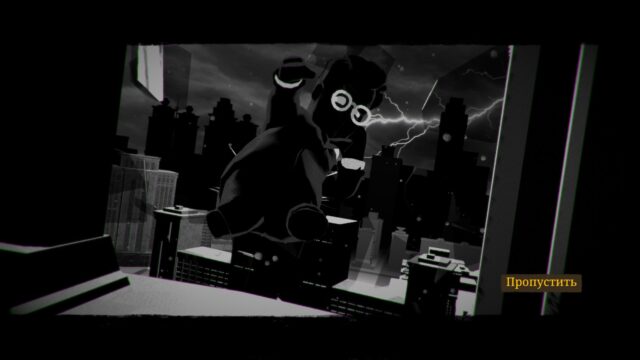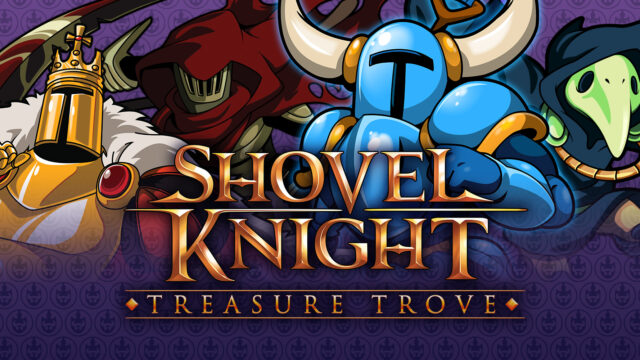Song of Farca Review: Don't Leave the Room, Don't Make a Mistake
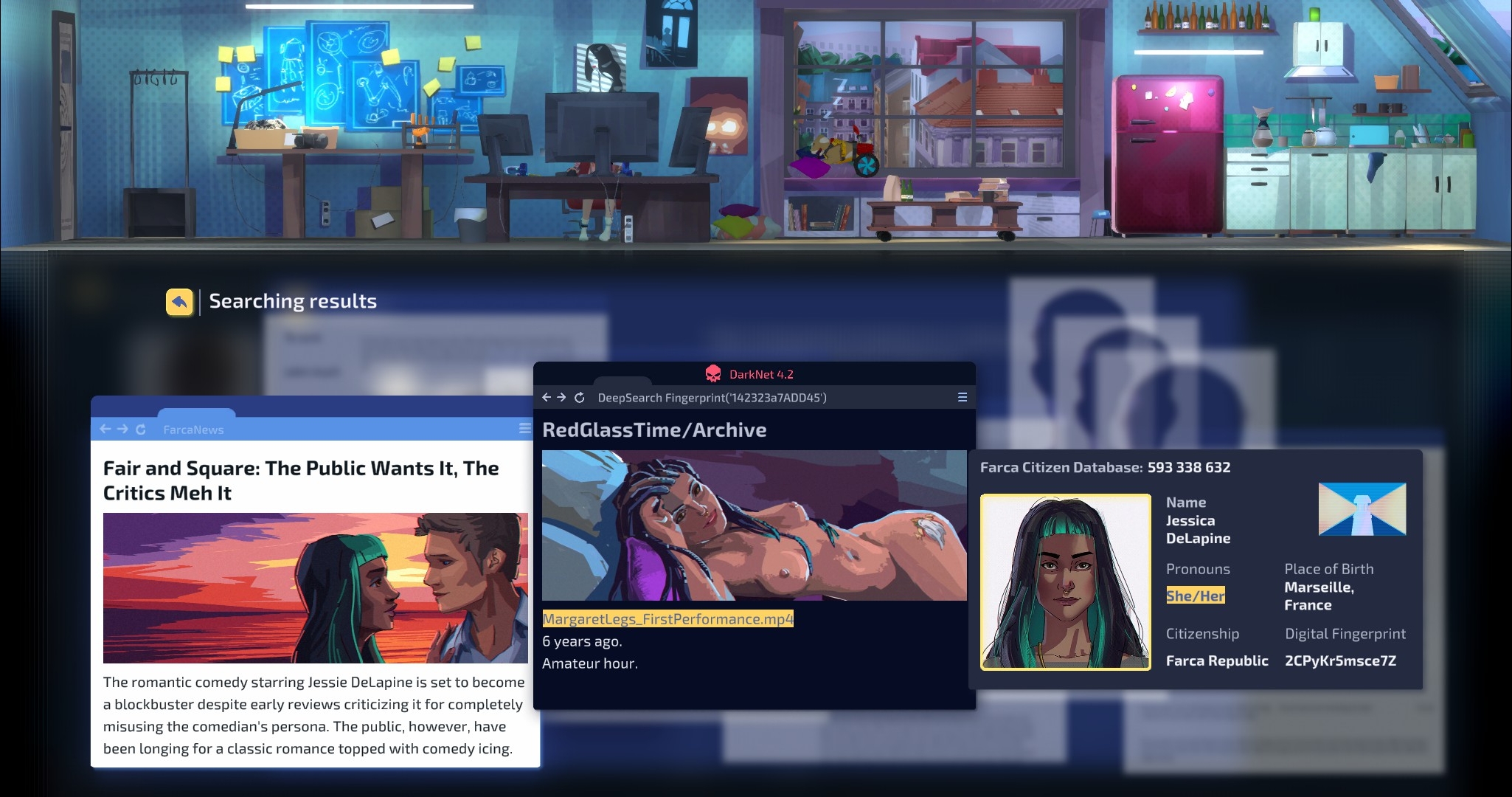
The “Farca” mentioned in the game title “Song of Farca” is a city. It’s a city somewhere, presumably in the Southern Hemisphere, independent, existing in the near future, where cyberpunk has already bared its steel, chipped fangs, but hasn’t yet been covered in three-layer universal armor enhanced with implants. The classic confrontation of the setting: predatory amoral corporations, a mafia that stops at nothing, and those who try to navigate between these two fires. The ineffective police don’t count.
Our heroine is Isabella Song, a private detective working on hire, plus a talented hacker. Of course, in such a “brave new world,” a detective must have many clients! The only problem is that Izzy can’t leave her house. She is under house arrest for a nasty fight – as expected, with an electronic bracelet on her ankle, and she can’t even walk her own dog (her assistant does it for her). But is that really a problem in the cyber era? Everything can be done remotely, remote control will save us!
By the way, the game developers – Wooden Monkeys, guys from Russia, so there is quality Russian text in the game from the very beginning. Perhaps some people know them from the game Save Koch. The publishers are Alawar (Beholder, Do Not Feed The Monkeys).
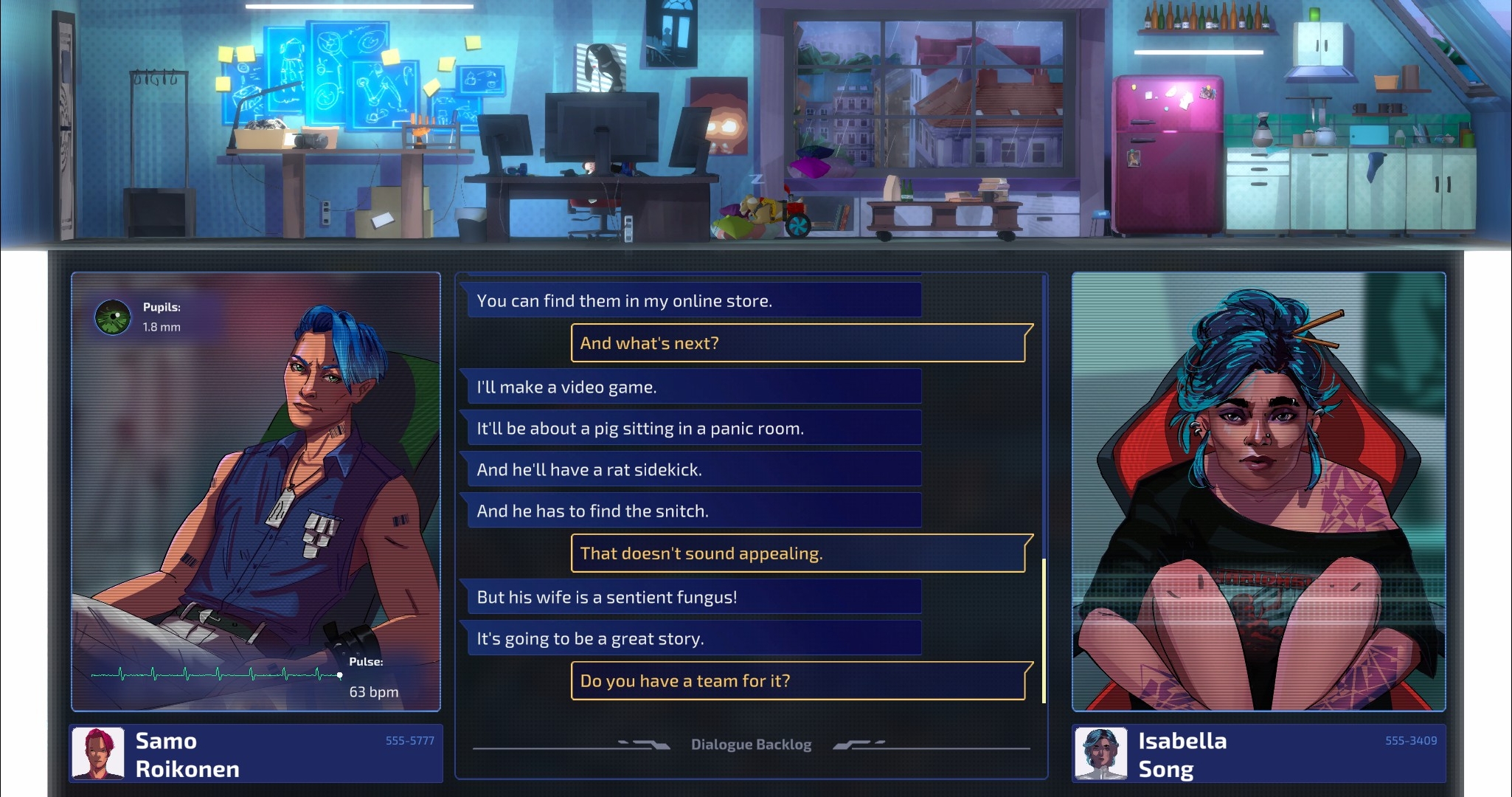
The idea of a detective under house arrest (or any detective who solves cases without leaving their home – think of Nero Wolfe) is quite interesting. Especially in a cyberpunk universe, where a professional hacker can control drones, cameras, other people’s phones, traffic lights – anything! There’s no need to risk your own skin on dangerous streets when you can order pizza and enjoy the spectacle on your monitor screens. The only question is how to implement it.
In Song of Farca, we solve puzzles, control cameras, and chat on the lower part of the screen. At the top, we are shown a view of Isabella’s apartment. However, the cursor is inactive when Izzy moves away from the computer (and we can’t directly control our heroine – only when she’s “at work”). So at the beginning of each chapter, the player observes for a couple of seconds as Izzy takes something from the fridge, dozes off on the windowsill, reads… Then a video chat call comes in, the heroine sits in her chair, and the actual gameplay begins. It seems okay, but… not really. It turns out that 99% of the time on the top strip, nothing happens because Isabella (who is also partially blocked by the monitor) doesn’t move at all, and it’s raining outside.and a company of Red Army soldiers, sometimes advertisements from passing bots are also broadcasted on this same window. That’s all.
Except for Izzy, the long-eared dog in a wheelchair, sometimes barking at the door or loudly crunching food from the bowl. The dog is adorable, but it’s not enough. If only he would react to the mouse cursor! It would be just as effective to place fish in a virtual aquarium or cats from Neko Atsume on top, at least they move around and add variety.

The riddles themselves are quite interesting and revolve around “rotate the camera to find the necessary object”, “guide the bug-bot through the ventilation”, and “distract unnecessary witnesses with smoke/noise/alarm” – exactly what is expected from a cyber-hacker. Cameras are everywhere, absolutely everywhere, including public and personal toilets, so that’s not a problem. Big Brother is watching you!
The keys caught in this way need to be examined on a virtual evidence board, possibly sent for additional analysis to artificial intelligence – Watson, that is Maurice, Izzy’s faithful assistant, and then used in dialogue, like bullets in Danganronpa. But here, of course, everything is much easier: there is no timer, you can choose the replies endlessly (except for a couple of cases, but even there they won’t lead to a game over), your interlocutor will patiently wait for you to gather the necessary arguments. The dialogues, by the way, are also good, Izzy has a great – black, of course – sense of humor, and the other characters are just as good as her.
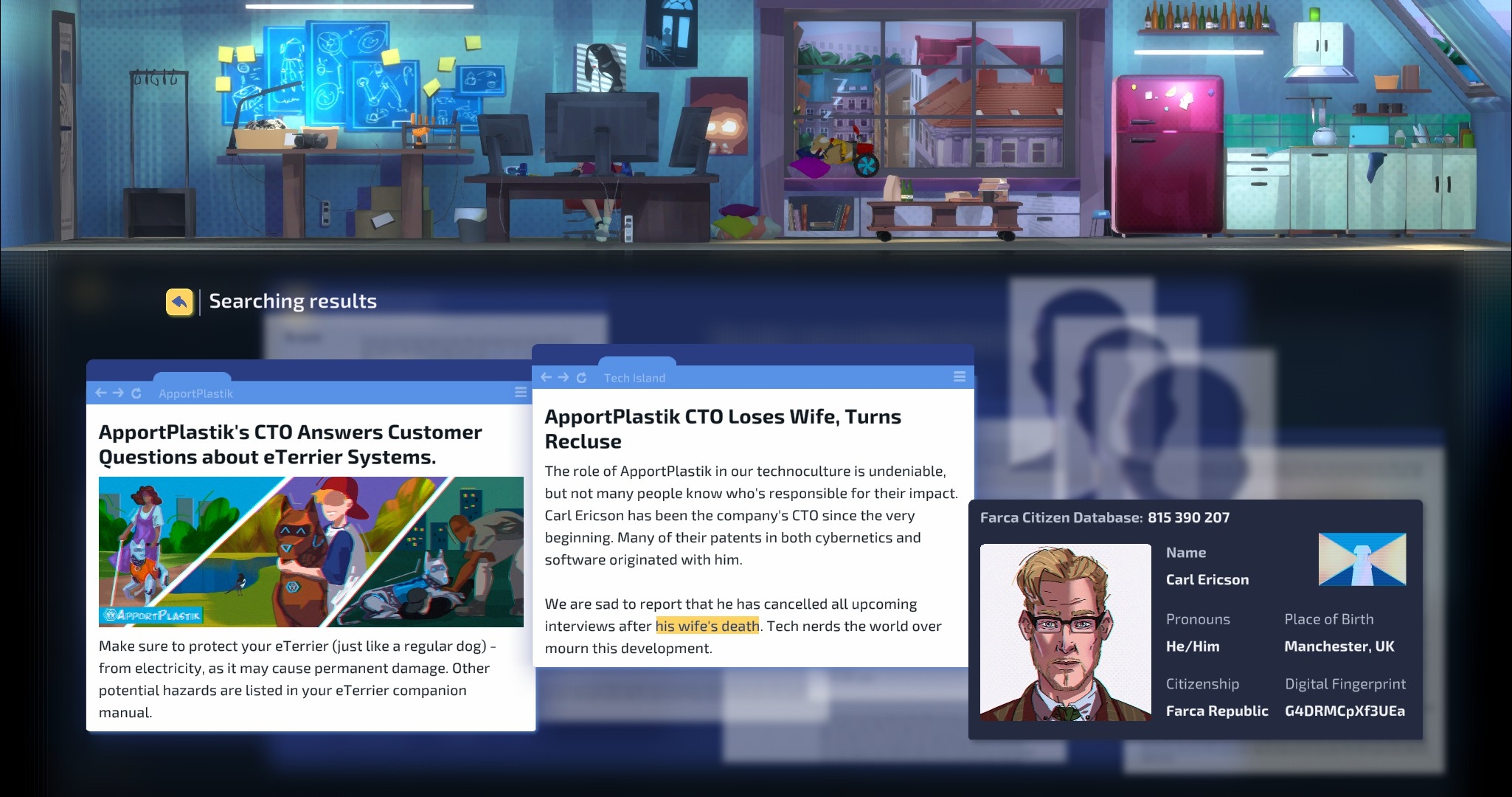
Truth be told, there is something that I have complaints about (and, judging by the panic threads on Steam forums, I’m not the only one) – the passwords that need to be cracked during the game. I don’t mind challenging puzzles, I complete quests without guides, only giving up at moments like “find the note A minor”, but here, it seems to me, the developers have gone too far. Some passwords I would never have guessed without hints. And some – even with hints: “the arrow points to 12 o’clock” – great, but not every bird in the middle of the Dnieper River will think to replace 12 with 00 in the password input field! As a result, on the second day, a guide with hints was released, and on the third day – with ready-made passwords for those who were not helped by the hints. I would really like to talk to the person who came up with these damn ciphers.
As it turns out, literally after a couple of “orders”, absolutely all the cases are connected. This Farka is some small town, smaller than Mytishchi, I swear, everyone knows each other! However, it’s even more interesting this way – the characters don’t disappear after participating in the investigation, but continue the story, and the overall plot is tied up with a clever maritime knot.
However, a question arises: if we have already seen a participant in the story in the previous two cases, why “google” them again when we see them for the third time? (That’s probably what you can call Isabella’s search in the regular network and in the “darknet”). We already know practically all the facts about him, photos, biography, and complete passport data, including a facial fingerprint on the bar counter in the city slums. It would seem that the data could be automatically filled in.
I enjoyed searching for interesting facts about the characters – the sources include darknet forums, blogs, official sources, and various videos of not entirely SFW content.
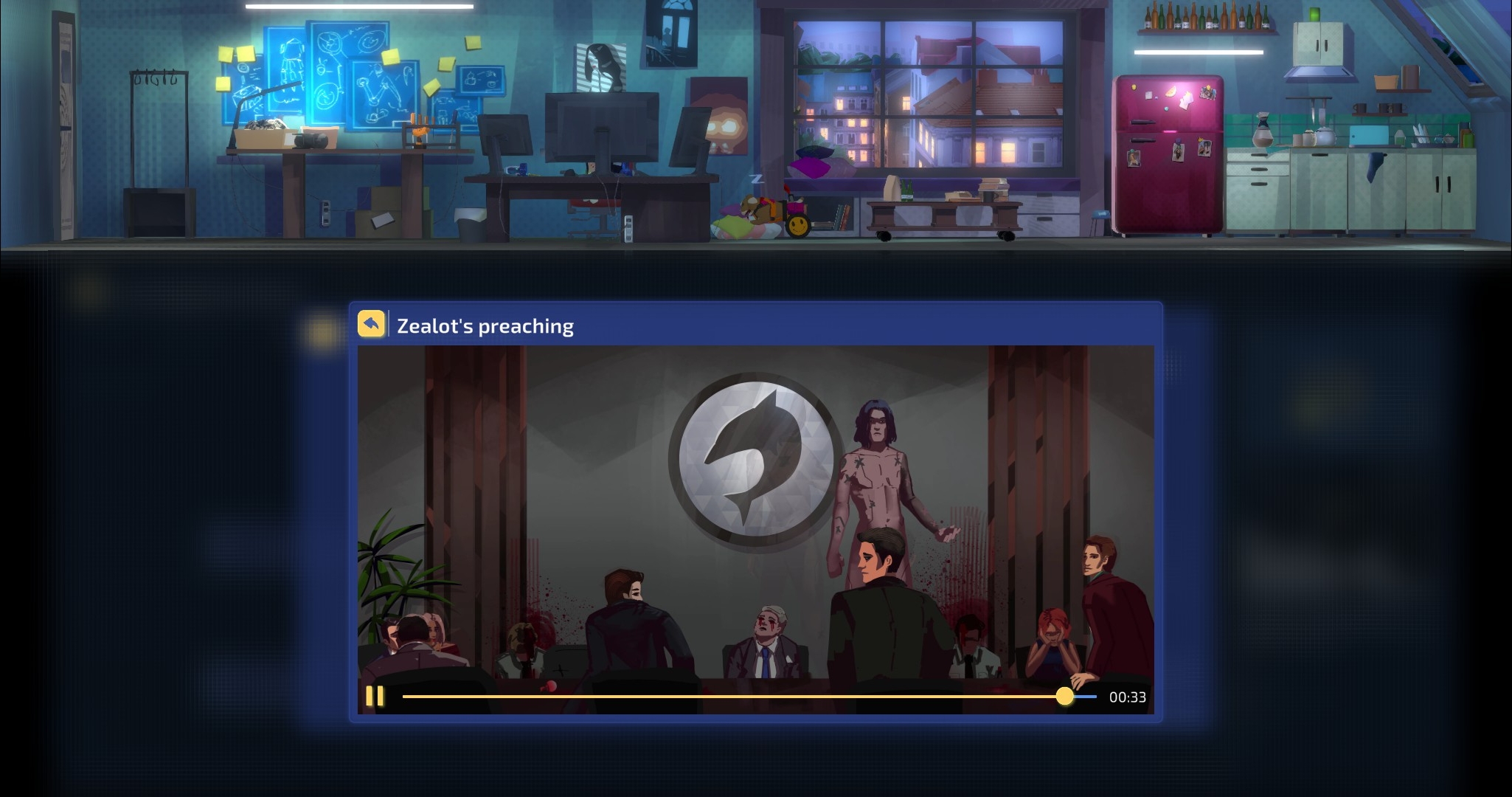
The art style is remarkable, the portraits of the characters are beautiful and expressive, the game is consistent in its tone, and the music – a few looping electronic melodies – perfectly enhances the mood.
Overall, Song of Farca leaves an impression of a very good, but very unpolished game. It has a wonderful story with multiple branches and endings, but only autosave, with a complete absence of normal saves. To replay all 6-8 hours of the game? Without the ability to skip dialogues and puzzles?.. The lack of widescreen support, not to mention ultrawide. Yes, Japanese developers deny the existence of such heresy as widescreen monitors, but the folks from Wooden Monkeys, it seems, weren’t born in Yokohama? The absence of built-in FPS limiting, which results in the game happily outputting a thousand frames per second, overloading the already burdened GPU; of course, this can be bypassed with graphics card settings, but come on! And that’s just the technical issues I’m talking about.
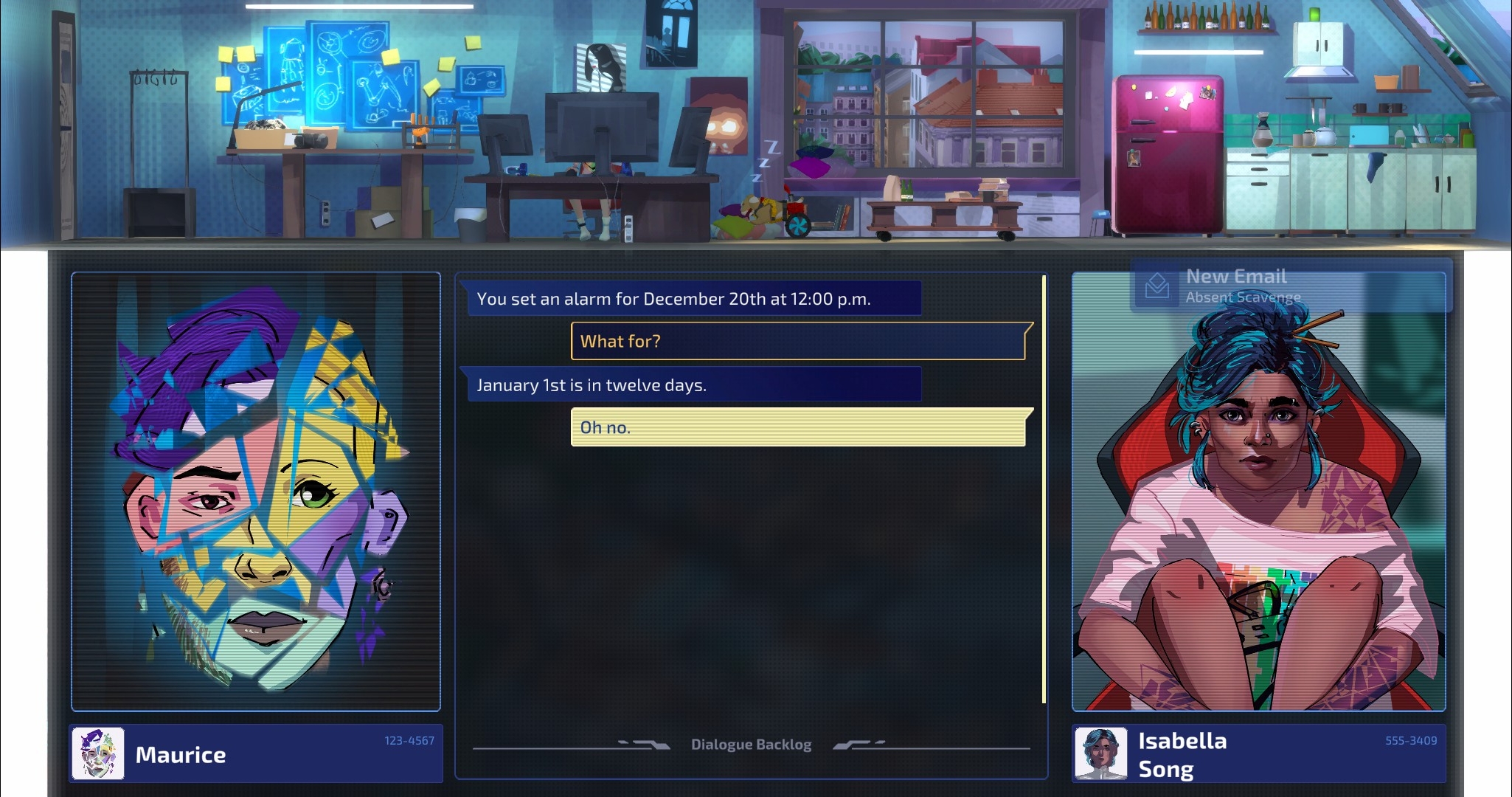
In terms of gameplay, I liked Song of Farca, but I would have been much more interested in a series of unrelated tasks with the ability to control the heroine/hero (at least in between “orders”), rather than the limited cast of characters and the separate top panel that exists outside of the game. If this was taken into account in Song of Farca 2, for example, or simply in the sequel, if it is planned, it would be great. Because we definitely have a lack of detectives and cyberpunk-themed games, and to have these two things together – you won’t find it easily, let alone of good quality…
Conclusion: Song of Farca may not appeal to everyone, but for those who do like it, it will captivate and not let go. I recommend playing it. free prologue, released on Steam, and only after that decide if the game suits you.
Share
Discuss
More Reviews



